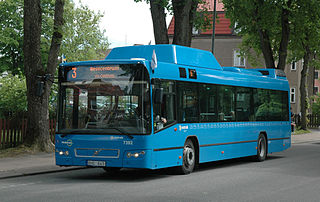 W
WThe Volvo 7000, later Volvo 7700, was an integrally-constructed fully low-floor single-decker rigid bus and single-decker articulated bus built by Volvo between 1999 and 2012. It was generally available as 12-metre and 18-metre on both diesel and CNG, and from 2010 as a 12-metre hybrid electric. A trolleybus version has also been built.
 W
WThe Volvo 7900 is an integrally-constructed single-decker rigid bus and single-decker articulated bus, most commonly available as a hybrid electric bus named Volvo 7900 Hybrid or just Volvo 7900H, but is also available with both diesel and Compressed Natural Gas (CNG) engines in some markets. It is manufactured at Volvo's plant in Poland. It was introduced at Busworld Kortrijk 2011. Based on the Volvo 7900 Hybrid an extension is offered, which i.a. includes a roof-mounted device for occasional loading at stops. The manufacturer assumes that all buses at all end stations and also at some particularly busy stations stay a few minutes until the return or onward journey. As soon as a bus reaches an appropriately equipped stop, a loading unit attached to a pillar at the roadside lowers onto the coupling point mounted on the roof of the bus. The charging process ends as soon as the bus wants to continue or the battery is full. According to the manufacturer, this equipment allows compared to conventional hybrid buses significantly extending the travel time in electric mode and a reduction in fuel consumption. The vehicle and the charging system were first presented to the public in September 2014 at the International Motor Show.
 W
WThe Volvo 8500 was an aluminium body single-deck city/intercity bus manufactured by Volvo between 2001 and 2011. It was available with medium floor as two-axle, tri-axle (B12M) and the articulated 8500A (B12MA). As the low-entry Volvo 8700LE as two-axle, tri-axle (B12BLE) and the articulate 8500LEA (B9SALE). From 2005 it was also available as the fully low floor Volvo 7500, which even came in a bi-articulated version. In the early years, the 8500LE was available with CNG on the B10BLE chassis. Later, CNG was only available on the 7500.
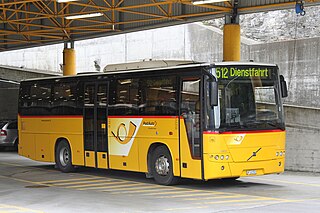 W
WThe Volvo 8700 was a single-decker city and single-decker intercity bus manufactured by Volvo between 2002 and 2011. It was available both with medium floor and as the low-entry Volvo 8700LE, which was even built as the articulated Volvo 8700LEA on a B12BLEA chassis. It was also available as a coach, and even some were delivered with a toilet.
 W
WThe Volvo 8900 is a single-decker city bus and intercity bus, first introduced in 2010 as a cross-breed successor to both the aluminium body 8500 and the stainless steel body 8700, taking advantage of both techniques. It is available both with 860 mm step-entrance floor and as the low-entry Volvo 8900LE.
 W
WThe Volvo 9700 is a range of coaches manufactured by Volvo. It was introduced in 2001 as a replacement for the Carrus Star and Vector/Regal models. There are three main models in different heights; 9700S, 9700H and 9700HD. The 9700S is only available in the Nordic countries. In addition there is the stripped down 9500 and the 9900 with theater seating. The coaches come in a variety of lengths up to 15 metres, depending on models and markets. Volvo 9700 is currently sold in most of Europe and North America. In 2015, the Volvo 9800 was launched as a replacement for the Mexican market, followed by the double-decker 9800DD in March 2018.
 W
WThe Volvo 9900 is a coach manufactured by Volvo, best known for its theatrical floor. The first generation was built by Drögmöller in Heilbronn, Germany, between 2001 and 2005. The second generation was introduced in 2007 as a member of the Volvo 9700 family and has since then been built at Volvo Polska Sp. z o.o. in Wrocław, Poland. The third generation was introduced in 2013.
 W
WThe Volvo Ailsa B55 was a front-engined double-decker bus chassis manufactured in Scotland by Ailsa, Volvo's British subsidiary in which it owned 75%, from 1974 until 1985.
 W
WThe Volvo B5LH is a low-floor hybrid electric bus chassis for both single-decker buses and double-decker buses manufactured by Volvo since 2008. It is the basis for Volvo's integral 7700 Hybrid full low floor city bus and its successor, the 7900 Hybrid from 2011. In 2008, pre-production batches of both types of chassis were manufactured. Serial production started in June 2010. From 2013 it is also available as an articulated bus chassis. First entering service in London, the B5LH is the only current double decker type in service in the United Kingdom that uses a parallel hybrid drive system.
 W
WFirst announced in August 2012, the Volvo B5RLEH, also known as Volvo B5RH and Volvo B215RH, is a hybrid-electric single-decker bus chassis manufactured by Volvo since 2013, initially only available in the Asia-Pacific region.
 W
WThe Volvo B5TL is a 2-axle low-floor double decker built by Volvo. It replaced the B9TL as Volvo's Euro 6 2-axle double decker product for the UK and Irish markets.
 W
WThe Volvo B6 was a 5.5-litre engined midibus chassis manufactured by Volvo between 1991 and 1999. It was also available as the low-entry Volvo B6LE.
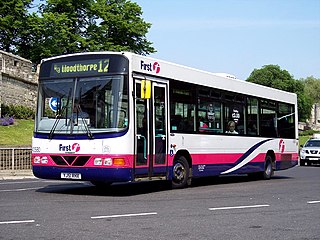 W
WThe Volvo B6BLE was a 5.5-litre engined low-entry midibus chassis manufactured by Volvo between 1999 and 2001, with three unfinished or unsold chassis being bodied in 2004 and 2005.
 W
WVolvo B609, Volvo B6F and Volvo B6FA were a series of front-engined midibus chassises manufactured by Volvo between 1976 and 1987. Its predecessor, the B54 was not a success, while the interim replacement, the BB57 was too large, so in 1976 Volvo launched the B609, which was in many ways just a Volvo F6 truck chassis without the cab, which meant it had the engine mounted on top of the front axle. In 1978 it was replaced by the B6F, which was built in the same way, but a bit more adapted to bus needs. Volvo also introduced the B6FA, which was a more conventional front-engined chassis, and a bit larger too. While the B6F had max gross weight of 9.3 tonnes the B6FA would manage 12 tonnes. While production of the smaller B6F ended in 1982, the B6FA lasted until 1987.
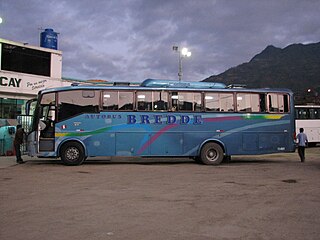 W
WVolvo B7F and Volvo B7FA were a series of front-engined single-decker bus chassis manufactured by Volvo. While the B7FA was a more conventional front-engined chassis, the B7F had the engine mounted on top of the front axle, giving the buses very little front overhang.
 W
WThe Volvo B7L is a fully low floor single-decker bus, double-decker bus and articulated bus chassis with a rear engine mounted vertically on the left of the rear overhang. It was built as a replacement for the Volvo B10L, and the Volvo Olympian. It was used as both a single-decker bus and a double-decker bus chassis largely in Continental Europe.
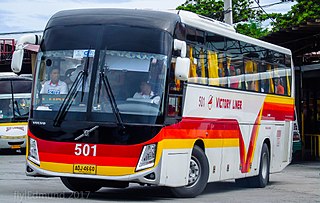 W
WThe Volvo B7R is a coach chassis available with a range of bodies. It is promoted as a rear engined lightweight coach chassis. It is primarily intended for tourist and long-distance duties. B7R is also manufactured in China, Brazil, Hungary, India and Iran for use in regional transport services.
 W
WThe Volvo B7RLE is a low-entry single-deck bus chassis manufactured by Volvo. It was superseded by the Volvo B8RLE in 2013.
 W
WThe Volvo B7TL is a low-floor double-decker bus chassis which was launched in 1999 and replaced the 2-axle version of the Volvo Olympian. It was built as the British bus operators seemed hesitant to purchase the B7L double decker with a long rear overhang.
 W
WThe Volvo B8L is a 3-axle bus chassis, for double-decker buses, manufactured by Volvo Buses since 2018, with pre-production batches being produced as early as in 2016.
 W
WThe Volvo B8R is a 7.7-litre engined coach and intercity bus chassis manufactured by Volvo since 2013 for Euro VI markets. It was designed as a replacement for the B7R and the B9R.
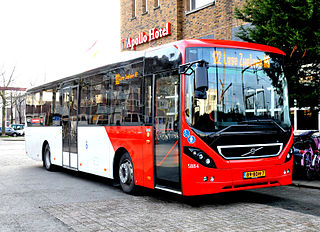 W
WThe Volvo B8RLE is a 7.7-litre-engined low-entry bus chassis manufactured by Volvo since 2013 for Euro VI markets. It was designed as a replacement for the B7RLE and the B9RLE. The right-hand drive version was launched in November 2014.
 W
WThe Volvo B9L was a fully low-floor single-decker bus chassis constructed by Volvo Buses from 2005 until 2013, replacing the Volvo B7L and Volvo B10L. An articulated model, known as the Volvo B9LA, is also available. It was superseded by the Volvo B5LH in Europe.
 W
WThe Volvo B9R is a rear-engined coach chassis built by Volvo. It can be built with bodies up to 13 m long and a maximum gross weight of 19,000 kg (42,000 lb).
 W
WThe Volvo B9RLE was a 9.4-litre engined tri-axle low-entry single-decker bus and double-decker bus chassis manufactured by Volvo between 2010 and 2013. The double-decker can be built as either closed top or open top. It was introduced as an interim replacement for the soon to be discontinued B12BLE in the short gap of years before they had the Euro VI compliant B8RLE ready. At the same time they introduced a tri-axle variant of the B7RLE, but in Volvo's home markets the 290 bhp that the D7E produces is considered way too little for a 15-metre bus.
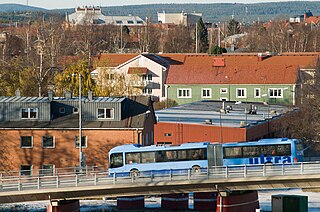 W
WThe Volvo B9S was an articulated bus chassis constructed by Volvo Buses between 2002 and 2011. It was available as a low-entry bus, a wholly low-floor bus, and an integral bus bodied by Volvo.
 W
WThe Volvo B9TL is a low-floor double-decker bus built by Volvo from 2002 until 2018. It superseded the Volvo Super Olympian and the Volvo B7TL. The 2-axle version has been superseded by the Volvo B5TL in 2014 and the 3-axle version has been superseded by the Volvo B8L in 2018.
 W
WThe Volvo B10 was a front-engined bus chassis built by Volvo in the 1930s.
 W
WThe Volvo B10B was a rear-engined step deck single-decker bus chassis manufactured by Volvo between 1992 and 2001. The first prototype were built in 1990, but the B10B wasn't launched until the 1992 Geneva Motor Show. It superseded the Leyland Lynx and Volvo B10R. For stage use it was gradually succeeded by the low-entry B10BLE, which was introduced only a year later, though not in all markets. For interurban use the B7R came as a gradual replacement in 1998, and ultimately for coach work, the B12B took over in 2001.
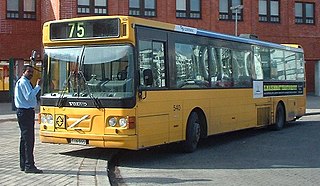 W
WThe Volvo B10BLE was a low-entry single-decker bus chassis manufactured by Volvo in Sweden between 1993 and 2004. The first prototypes were built in 1992, but mass production started in 1993, only a year after the high-floor B10B. It was popular in Australia, Scandinavia and the United Kingdom. It had the engine mounted on the rear overhang of the bus. It became the successor of the city bus version of the B10B and was used as a base for single-decker buses worldwide. The B10BLE was available in diesel powered format, and later in a compressed natural gas powered format with the fuel tanks on the roof of the bus. Its low-floor design was widely promoted by Volvo when it was first launched, on the basis of added convenience to the passengers, and the increase in transport efficiency due to the low-floor design.
 W
WThe Volvo B10L was a rear-engined, low-floor single-decker public bus chassis built by Volvo between c. 1993 and c. 2005. An articulated version of the B10L, known as the B10LA, was also produced.
 W
WThe Volvo B10M is a mid-engined city bus and coach chassis manufactured by the Swedish automaker Volvo between 1978 and 2003. It succeeded the B58 and was equipped with the same 9.6-litre horizontally mounted Volvo diesel engine mounted under the floor behind the front axle. An articulated version under the model name Volvo B10MA was also offered, as was a semi-integral version known as the C10M, with the engine in the middle of the chassis.
 W
WThe Volvo B10R was a rear-engined bus chassis manufactured by Volvo between 1978 and 1993. It was as its predecessor, the B59, aimed as a citybus chassis, and was succeeded by the more versatile B10B in 1993.
 W
WThe Volvo B11R is a 10.8-litre engined coach chassis available as both two- and tri-axle from Volvo since 2011. It was introduced as the second of the Volvo BXXR series, replacing the rest of the B12B range in 2011, and later its fellow BXXR platform model, the B13R in 2013.
 W
WThe Volvo B12, also known as the Volvo B12R, was a rear-engined heavy-duty coach chassis manufactured by Volvo in Sweden between 1991 and 2001, and in Brazil between 1997 and 2011.
 W
WThe Volvo B12B was a rear-engined coach and intercity bus chassis built by Volvo. It is built as a direct replacement of Volvo B12 in the European market and the Volvo B10B.
 W
WThe Volvo B12BLE is a low-entry city and suburban bus chassis launched in 2001 with a rear-mounted transverse engine. It superseded the Volvo B10BLE and is used as a base for single-decker buses in Europe and Australia.
 W
WThe Volvo B12M is an underfloor-engined bus/coach chassis introduced by Volvo Buses in 2001 as a replacement for the Volvo B10M. It is available with a variety of bodies such as the Van Hool T9 Alizee, Sunsundegui Sideral and Plaxton Panther/Paragon. Large British users of the B12M include Wallace Arnold, Park's Motor Group and Southern Vectis.
 W
WVolvo B13R is a 12.8-litre engined coach chassis available as both two- and tri-axle from Volvo since 2009. It was the first of the Volvo BXXR series, replacing the higher output configurations of the B12B. It was later joined by the B11R, which has the same base chassis but a smaller engine. However, because Volvo decided not to upgrade the D13 engine to comply with the Euro 6 emission requirements, it was replaced by the B11R in the European market, but is still available at other markets, like Mexico. The B13R is easy recognisable as being the only modern Volvo coach chassis with air intakes on the right-hand side.
 W
WVolvo B54 was a front-engined midibus chassis manufactured by Volvo between 1966 and 1971. It was technically more or less just a Volvo F85 truck chassis without the cab. The engine was mounted on top of the front axle, giving the buses very little front overhang. Before the end of production in 1971, it was in a way replaced by the larger BB57, but the true successor was the F6-based B609 that came in 1976, half a decade later. The B54's predecessor had gone out of production in 1964, so it was clearly not a model that Volvo put a lot of effort into at the time. Only 533 chassis were built.
 W
WVolvo B57 was a front-engined single-decker bus chassis manufactured by Volvo between 1966 and 1982. Since 1970 it was also available as the Volvo BB57, with the engine mounted on top of the front axle, giving the buses very little front overhang. The BB57 became a kind of replacement for the smaller B54, but as it was larger, the B54 got its true replacement later. The predecessor to BB57, the B615 had gone out of production in 1965, but apparently the demand for such a model was so high that they had to bring it back almost half a decade later, as the B54 proved to be too small.
 W
WThe Volvo B58 was a mid-engined single-decker bus, double-decker bus, single-decker articulated bus and single-decker coach chassis manufactured by Volvo in Sweden from 1966 until early 1982. It was succeeded by the B10M.
 W
WThe Volvo B59 was a rear-engined bus chassis manufactured by Volvo in Sweden between 1970 and 1979.
 W
WThe Volvo C10M was a semi-integral coach introduced by Volvo in 1984. C10M was also a coach chassis based on the Volvo B10M. While the normal B10M chassis had the engine mounted right behind the front axle, the C10M had it centered between the front and rear axle, providing even better weight balance.
 W
WThe Volvo I-Shift is an automated manual transmission developed by Volvo subsidiary Volvo Powertrain AB for Volvo Trucks and Volvo Buses, with 12 forward gears and 4 reverse gears. It became available for trucks in 2001 and later buses in 2004.
 W
WLeyland Bus was a British bus and train manufacturer. It emerged from the Rover Group as a management buyout of the bus business. It was subsequently acquired by Volvo Buses in 1988 and the Leyland name disappeared in 1993.
 W
WMillennium Luxury Coaches is a Central Florida based manufacturer of custom luxury motor coaches, built at their 100,000 square foot facility in Sanford. All coaches are built using the Prevost commercial bus chassis. Millennium has designed custom coaches for business owners, celebrities and pro athletes which have retailed for over $2,000,000.
 W
WNova Bus Inc. is a Canadian bus manufacturer headquartered in Saint-Eustache, Quebec, Canada. Nova is owned by Volvo Buses, a division of the trucks, buses and construction equipment group Volvo.
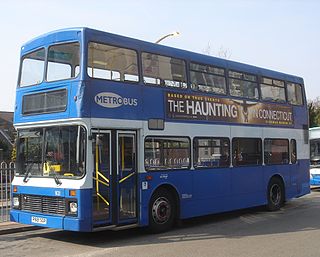 W
WThe Volvo Olympian was a rear-engined 2-axle and 3-axle double decker bus chassis manufactured by Volvo at its Irvine, Scotland factory. The first was built in 1992 and entered production in March 1993, replacing the Leyland Olympian.
 W
WThe Volvo Super Olympian was a low-floor double-decker bus manufactured by Volvo. It replaced the 3-axle version of Volvo Olympian. The chassis had the designated manufacturer code B10TL.